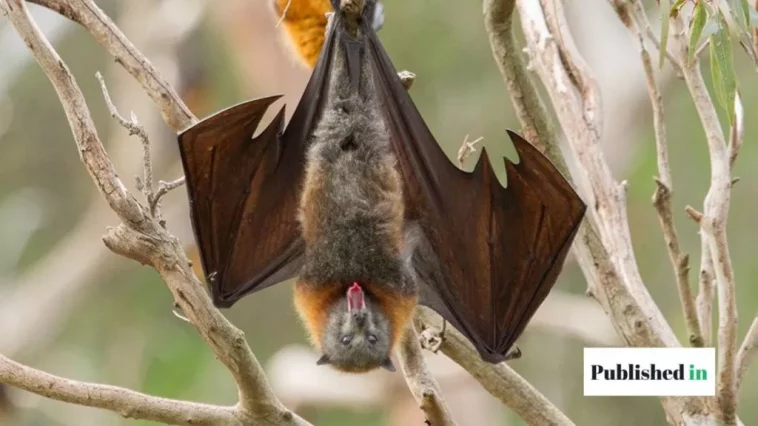Key Takeaways
- Identify entry points and roosting spots in your barn before taking action.
- Timing is crucial: exclude bats only after pups can fly to avoid trapping them inside.
- Use one-way exit devices to allow bats to leave safely.
- Seal gaps and cracks after bats have departed to prevent re-entry.
- Avoid poisons or traps—they’re unsafe and inhumane.
- Professional wildlife experts can provide guidance and ensure long-term results.
Getting bats out of your barn safely and humanely isn’t rocket science, but it does require patience and strategy. Start by finding their entry points and roosts, then wait until the pups are flying before attempting exclusion. One-way exit devices let bats leave without harming them, and sealing gaps afterward ensures they don’t sneak back in. Skip the traps and poisons—they’re both cruel and risky. With careful planning and maybe a little help from professionals, you can reclaim your barn while keeping bats safe and happy.
Understanding Why Bats Take Up Residence
If you’ve ever walked into your barn and felt that chill—or heard the flurry of tiny wings—you know bats can be unsettling. But before we panic, it’s worth remembering: bats are more scared of us than we are of them. They’re not plotting to take over your barn; they’re just looking for a warm, sheltered place to sleep during the day.
Bats love barns because of:
- Dark, quiet nooks under rafters
- High ceilings for easy flight
- Protection from predators
- A buffet of insects at night
I remember the first time I noticed bats swooping around my barn. I screamed, spilled my coffee, and tripped over a hay bale. Totally embarrassing, but it was a wake-up call—I needed a plan that kept both me and the bats safe.
Timing Matters: Don’t Rush It
This part is crucial. Excluding bats too early—especially in late spring or early summer—can lead to trapped pups, which is heartbreaking and, in many states, illegal.
- Late Spring/Early Summer: Pups are flightless; wait before exclusion
- Late Summer/Fall: Ideal time for humane removal
- Winter: Bats may hibernate; disturbing them can be fatal
Think of it as waiting for your kids to grow up before kicking them out of the house. Patience pays off.
Using One-Way Exit Devices
Here’s where things get interesting. One-way exit devices are like the VIP exit for bats—they leave on their own terms, but can’t come back. You can buy specialized tubes or nets, or fashion your own if you’re handy.
Steps to install:
- Locate all main entry points.
- Attach the device so bats can exit freely.
- Monitor for a few nights to ensure they leave.
- Remove the device once the barn is empty.
These devices are a win-win: bats get a safe exit, and you get your barn back.
Sealing Entry Points
Once the bats have flown the coop, it’s time for the home improvement part—sealing the barn so they don’t return.
Tips for sealing:
- Use fine mesh or caulk for small cracks
- Replace broken siding or vent covers
- Check the roofline and eaves carefully
- Ensure ventilation isn’t completely blocked
A well-sealed barn keeps bats out, insects in check, and drafts minimal—a triple win.
When to Call a Professional
Sometimes, even after all your DIY heroics, bats are stubborn. That’s when wildlife control experts come in. Professionals can:
- Safely remove bats without harming them
- Inspect the barn for hidden entry points
- Recommend long-term prevention strategies
It’s worth the investment if you value your sleep, sanity, and the bats’ welfare.
Table: Quick Reference for Humane Bat Removal
| Step | Action | Timing | Notes |
|---|---|---|---|
| Identify roosts | Check rafters, vents, and eaves | Any time | Observe without disturbing bats |
| Wait for pups to fly | Only exclude after pups can fly | Late summer/fall | Avoid trapping young bats |
| Install one-way exit devices | Guide bats out safely | During active season | Monitor nightly |
| Seal entry points | Patch gaps, cracks, and broken siding | After bats leave | Ensure proper ventilation |
| Call professional help | If bats persist or barn is large | Any time | Safe, legal, and stress-free removal |
Frequently Asked Questions
No, chemicals and poisons are harmful, inhumane, and often illegal. Use one-way exclusion devices instead.
Sealing should only be done after all bats have left, usually guided by exit devices, to ensure no one is trapped.
It can take a few nights for all bats to exit, depending on the size of the colony and barn. Patience is key.
Bats generally avoid humans and are beneficial for controlling insects, but always handle them with care to avoid bites or exposure to diseases.
In some regions, bats are protected. Always check local wildlife regulations before attempting exclusion.
Summary
Removing bats from your barn doesn’t have to be stressful or cruel. With careful timing, one-way exit devices, and proper sealing, you can reclaim your space safely. Remember, patience is your best ally—rushing the process risks harming the bats and creating legal issues. If all else fails, professional wildlife experts can ensure a humane and effective solution. By following these steps, you protect both your barn and the bats, striking a balance between safety, efficiency, and compassion.






GIPHY App Key not set. Please check settings